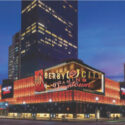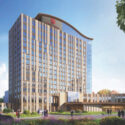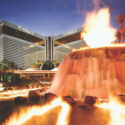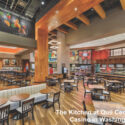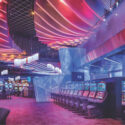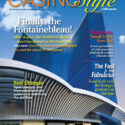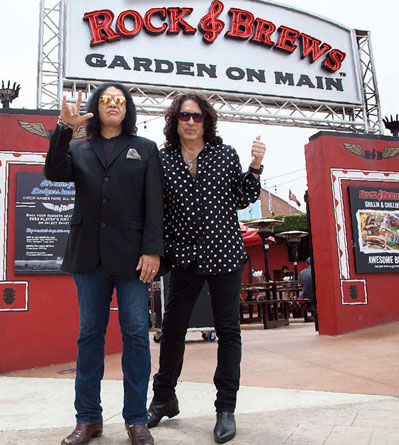
Despite our many differences in appearance, size, beliefs and dietary preferences, we share a common desire to enjoy good food and quality dining experiences.
In the context of casinos, operators want to procure and provide the perfect blend of food and beverage options to complement their properties and brands; contractors and designers want to build them on a grand scale; and of course, patrons want to enjoy the actual results. The process of selecting and refining that blend is daunting, however. Perhaps the first and most common question operators and architects must ask is whether to invest in an original venue or one with an established brand or celebrity association.
The calculus is like evaluating professional athletes before a draft—an original offering may be seen as a risk with a higher upside potential, whereas a branded operation may have a higher floor but less growth potential.
There’s no one correct answer. A successful dining experience is dependent on service and execution, not a particular name or brand, and there is a litany of good and bad examples for each. Operators also differ in their particular preferences.
As commercial and tribal operators expand and renovate their brick-and-mortar holdings, the debate between branded versus original dining options has more voices and considerations than ever.
Bolstered by Big Names
Opening a new restaurant, in a casino or elsewhere, carries a lot of risk, perhaps more than any other type of development. Thus, branded venues most often represent the safer option because of their consistency. An established platform checks a lot of boxes, which is enticing for operators focused on providing swift returns on investment. They also come with their own costs—mainly in the form of licensing fees—but the expansion of numerous franchises and chefs around the country would indicate that those costs are more than feasible.
In recent years, there has been “continued interest in incorporating established F&B brands into the casino resort environment,” says Dike Bacon, principal at HBG Design. The concept of co-branding with high-profile chefs and companies is “gaining more traction with casinos as a means to broader market appeal and greater name recognition from an expanding customer base.
“For a while it seemed like expensive branding fees were deterring the introduction of new branded venues into the casino resort,” Bacon continues. “But integrated branding appears to have made a comeback on an even grander scale and commitment.”
One example of a brand that’s made extensive inroads in the casino space is Rock & Brews (R&B), a brew-pub chain backed by Rock & Roll Hall of Famers and KISS frontmen Gene Simmons and Paul Stanley. According to R&B CEO Adam Goldberg, the company, formed in 2010, already boasts a total of 23 locations throughout the U.S., partly thanks to the popularity of the associated artists.
“Having the celebrity stamp of approval means our brand is proven and successful,” Goldberg notes. “With our extensive years in the hospitality industry, we are operators first. Casinos can benefit from our operational expertise, from menus to playlists to art packages and built-in marketing opportunities with other rock stars.”
Alexandra Milkovich, senior interior designer for HBG who helped design the R&B Casino and Restaurant in Braman, Oklahoma, echoes this point. “Having a celebrity name attached to a property is, of course, a great marketing tool for a casino owner,” she says, adding that celebrities and franchises “have a large following of people who want to be part of the next big ‘thing’ in the industry.”
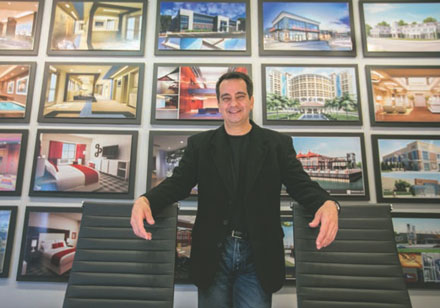
John P. Ruiz, Principal, R2Architects
Of course, the celebrity name in a lot of cases is tied to a specific chef, long a popular choice among operators and ultimately, their patrons. These venues often do a good job of maintaining a somewhat consistent standard of service while also catering to the unique aspects of each property and its geographic location. Food is a universal language, and a chef with a following can attract new demographics, some of whom wouldn’t have ventured to a casino otherwise.
Chef-sponsored restaurants can also present unique challenges, but there are still plenty of opportunities to be had if the process is done right, notes John P. Ruiz, principal at R2Architects.
According to Ruiz, the success of celebrity chef-branded venues starts with all parties involved sitting down and negotiating the details, down to the menu items and design elements, to ensure limited friction throughout the construction process and afterwards as well.
Usually, Ruiz says, “the bigger the reputation the chef has, the more knowledge and experience they have,” which allows them to “go into a deal like this because they tend to be very busy people.”
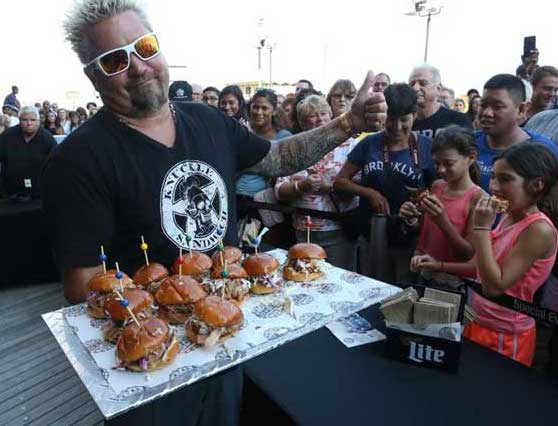
Guy Fieri opens Guy’s Bar-B-Que Joint in Atlantic City
Working with celebrities is never easy, especially for complex operations like casinos and restaurants. Ruiz chuckles when recounting deals from years past that “just imploded” over the most trivial disagreements—“these things happen.” Among other projects, R2A has collaborated with Guy Fieri, the spiky-haired Mayor of FlavorTown himself, on three sponsored eateries: Guy’s Sammich Joint at Harrah’s Atlantic City, Guy’s Bar-B-Que Joint at Wild West Atlantic City, and Guy Fieri’s Philly Kitchen & Bar at Harrah’s Philadelphia.
Letting Grass Roots Rise
Despite all the benefits that brand recognition may have for F&B offerings in casinos, rinse-and-repeat franchises can lack certain non-quantifiable elements that ground-up venues can create; simply put, there’s no soul, no creativity.
Choosing to open an original venue may not bring the same immediate returns as a big-box chain, but if executed correctly, the upside can be higher, and the best designers and contractors can fully showcase their talents free from pre-packaged presentations.
“When you’re doing your own venue, you’re free of all those parameters that exist with a branded venue,” says Elena Gonova, senior associate, interior design at Cuningham Group Architecture. “If you can create a unique experience, that’s an amazing opportunity. It’s looking at context, it’s looking at the market, it’s looking at the clientele and what’s missing.”
Choosing the ground-up approach means shouldering more of the responsibility, and operators must also have a sense of what their particular patrons want. Branded options come with a “pre-set expectation for design and quality of space,” says Gonova, whereas the best original ideas are often the result of “identifying what’s needed, the niche (operators) want to fill” for their location.
Cuningham Principal and Director of New York Gregory Houck adds that the market itself plays a big role when it comes to the F&B process. Large urban markets like the Las Vegas Strip tend to elicit high-class, one-off experiences that chains simply may not be able to match.
“A lot of times, urban centers around the country may be the business center or the downtown of a city,” says Houck. “A lot of times that’s not the right place for a branded, more cookie-cutter type restaurant, even if it’s really high-end. There are certain situations where you really want a brand that’s unique to the market. And that can become a draw if it’s a one-of-a-kind type thing.”
The Stillaguamish Tribe’s Angel of the Winds casino in Washington state, a Cuningham project, features the luxurious Whiskey Prime steakhouse, a stunning example of a well-executed, ground-up venue.
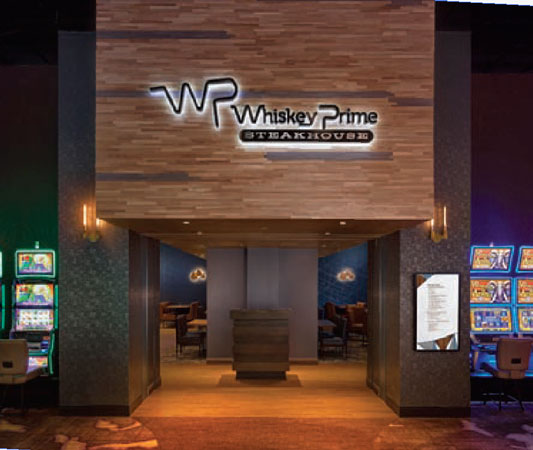
Whiskey Prime, Angel of the Winds Casino
Of course, that’s not to say that smaller, regional casinos should completely shy away from creating their own identity as well. After all, most of the biggest chains in the U.S. began in some of the smallest towns, as hometown favorites.
For Austin Gerber, senior associate at SOSH Architects, there’s nothing wrong with the grass-roots approach. “We do like to see some of our local neighborhood restaurants become featured names within these larger casino venues, and it’s always nice to be able to support them and encourage them to grow into a brand themselves.”
Gerber also notes that some casinos may not even have the choice to go with a branded venue due to various constraints. Before the process even starts, there has to be a “test fit” to see if a space “even complies to meet specific size requirements that a brand may have.”
Original venues, of course, have no such restrictions, which can be seen as both an opportunity and a challenge. Celebrity chefs may be difficult to work with in some situations, but seeing an idea through from start to finish takes just as much if not more collaboration between parties.
“When it’s a one-off, it’s our responsibility to kind of help guide and create that brand with the client versus being handed the brand,” says SOSH Interior Design Studio Manager Arley Sochocky. “I’d say that a one-off development of a brand for somebody tends to be a little more challenging versus already having a brand identity that’s tried and true in other locations.
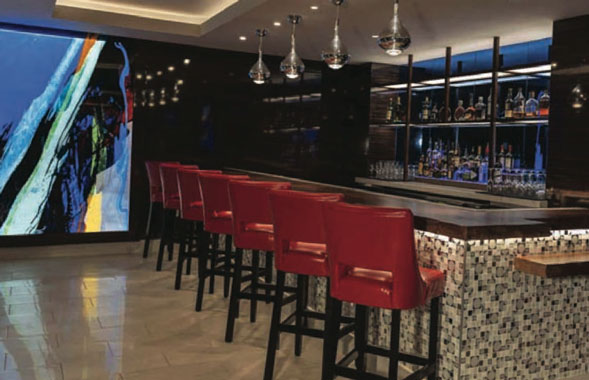
Il Verdi, Tropicana Atlantic City
“So, when you’re developing a design from scratch, quite often you have to come across things like constructability, cost implications and timing of everything to meet opening deadlines or things like that.”
A prime example of this collaboration and execution from SOSH is the award-winning Il Verdi, a gourmet Italian restaurant located inside Tropicana Atlantic City, complete with custom finishes, fixtures and furniture.
Location, Location
Of all the factors that influence the F&B decision-making process, two are perhaps most important: the location of the venue within the casino and the size of the casino itself. Often, these details will help the process shake out—or, as R2A’s Ruiz puts it, “you can start to peel the layers off the onion.”
“It really varies,” he says. “And what I mean by that is the size of the property—does it have three to five outlets, or does the property have 15 to 20 or 25 or more food-and-beverage outlets? How large is the property? That’s where these things start.”
Renovations and expansions of existing spaces are more common than brand-new builds, which means that casinos often have a predetermined space in which to fit a venue, and there are do’s and don’ts that correspond to that scenario.
As Cuningham’s Houck says, “One of the bigger questions is, what do you want to fill if it’s a large casino? It’s kind of like 101—you don’t put a Mexican place next to another Mexican place. So there is a sense of looking at what’s needed.”
Additionally, changes in patron preferences can make certain concepts outdated, and renovating can allow operators to “remain responsive to changing market conditions and new branding opportunities and to refresh a property’s offerings,” says HBG’s Milkovich.
Casinos big and small are like mini-ecosystems, constantly trying to find the best flow, the best integration of amenities and gaming. As such, companies will vary in their brands and tastes (no pun intended), and architects and designers will work to keep pace with those changes.
“Different clients and different properties have different techniques or theories behind it,” SOSH’s Sochocky explains. “Some clients we work with actually like their top restaurant all the way at the back of a casino, so they can draw people through the casino floor to get to it. Some of our clients like it at the front door… Their gaming floor also has a lot to do with it. It does become a little bit of a game of real estate.”
Regardless of the type of venue, it’s clear that the true beneficiaries are the patrons, the ones who get to fully enjoy the experiences that operators, designers and architects work so hard to create. A truly successful venue is one that can satisfy its target audience, again and again and again.



